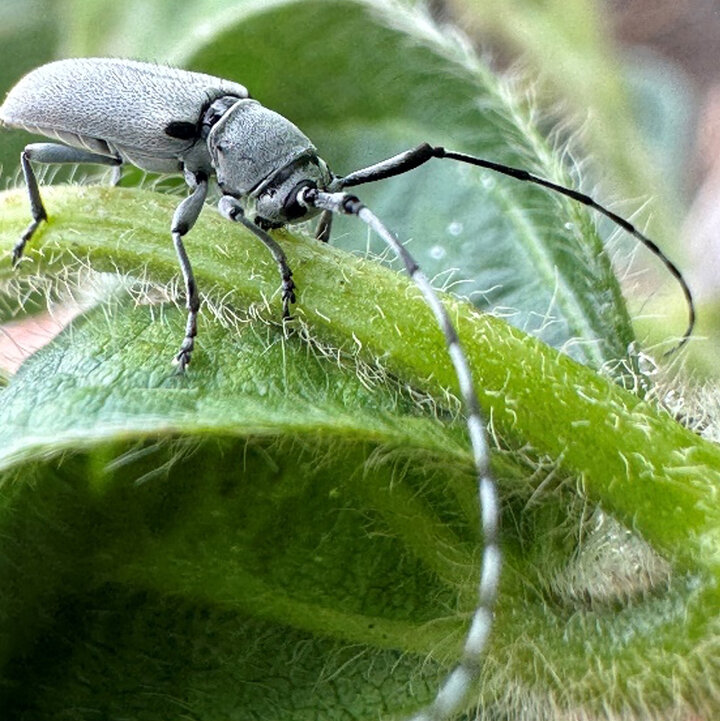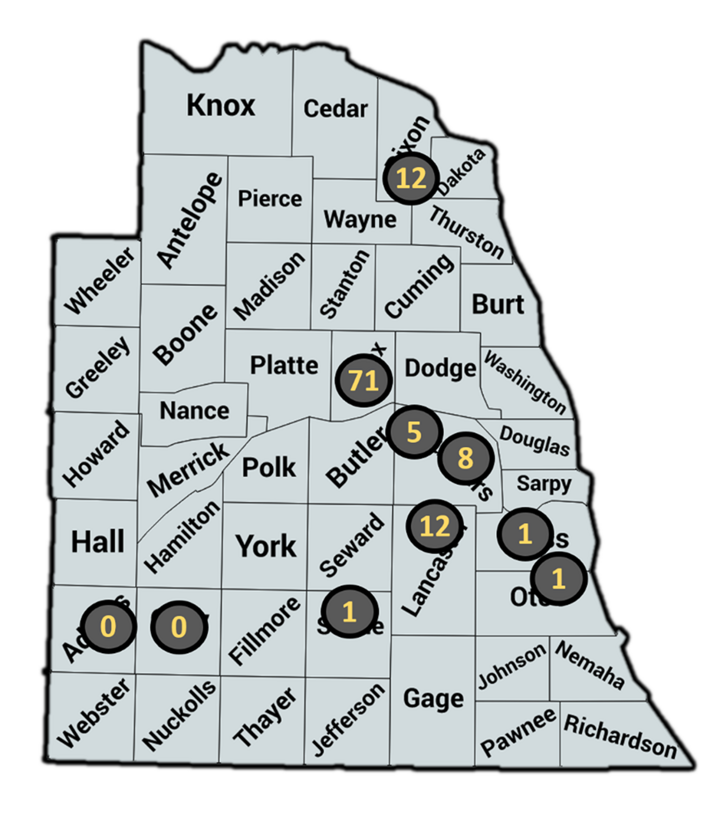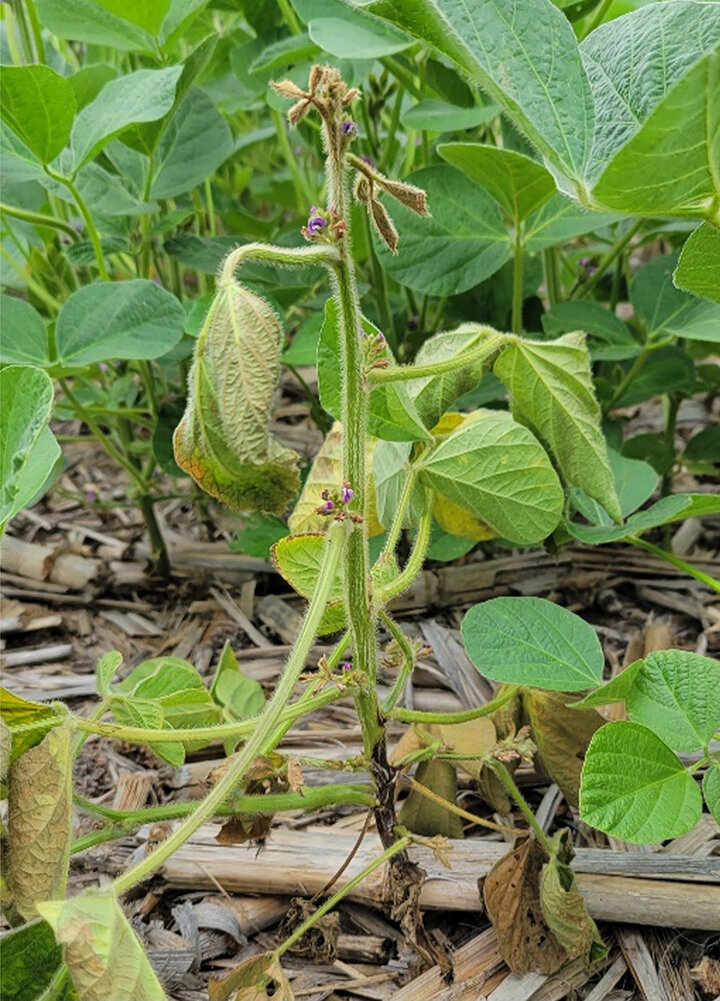Key Pests and Their Interactions
If you’re a soybean farmer in Nebraska, then you’ve seen your fair share of insect pests and plant diseases.
In 2018, several soybean farmers in eastern Nebraska were introduced to a new pest — the soybean gall midge (Figure 1). Under heavy infestations, soybean gall midge is capable of causing near complete yield loss to soybean in the first 100 feet along a field edge. Yield losses are attributed to the larvae feeding at the base of the stem, which limits the flow of nutrients and water, causing the plant to wilt and die.
When scouting fields for soybean gall midge, you will likely come across a small grey beetle with long antenna, commonly known as the Dectes stem borer (Figure 2). This little beetle is native to North America and has historically spent most of its time on ragweed, cocklebur and sunflowers. Over the past few decades, it has made a host shift to soybean, which has raised considerable concerns about its potential to cause yield losses.
In the spring, Dectes stem borer adults emerge, and females chew a small groove in the petiole of a soybean plant where they lay an egg. After hatching, the larvae feed within the petiole and then move into the mainstem, where they spend most of the summer. Dectes stem borer larvae feed almost exclusively on the pith of the plant and can turn the main stem into something that resembles a drinking straw.


Cutting open an infested plant can be alarming and has raised questions about the yield losses from larval feeding. Studies in the southern U.S. indicate that physical feeding alone doesn’t impact yield. Although larval feeding is visually concerning, a greater issue is the girdling of the stems at the end of the season. The stem girdling occurs when the larvae prepare their overwintering chamber at the base of the plant. This significantly weakens the stem and can cause infested plants to lodge in high winds or storms.
In the fall of 2023, Drs. Dylan Mangel and Justin McMechan visited fields where Dectes stem borer was suspected to be causing the death of soybean plants. Because of how Dectes stem borers feed, it is nearly impossible for them to kill a plant on their own. During the field visits, several different plant diseases as well as soybean gall midge were prevalent. Since these organisms co-occur in soybean fields, it is important to determine what interactions they may have and if the presence of multiple pests can cause increased yield losses.
Project Goals
In 2023, the Nebraska Soybean Board funded a project to look at the yield impacts and interactions of soybean gall midge, Dectes stem borer, and plant diseases at several locations in east and central Nebraska. The project will be managed by Thales Rodrigues da Silva, a master of science student in the Department of Entomology, who is co-advised by McMechan and Mangel.
To evaluate the plant disease-insect interactions, a series of unconventional treatments will be used (hilling for soybean gall midge, fipronil seed treatment for Dectes stem borer, and several fungicide applications). These treatments limit a specific pest from the system so we can study the impact of different combination of pests. A series of updates will be provided that will highlight observations at the research sites.
Field Observations
In mid- to late June, soybean fields at 10 different sites were sampled for soybean gall midge, petioles were checked for Dectes stem borer, and plots were visually evaluated for plant diseases.

Soybean gall midge larvae were found in relatively low numbers (Figure 3) at all the eastern sites, with the exception of Lancaster, Colfax, Saunders and Dixon County. The numbers in these counties were exceptionally high for this early in the season. The number of larvae have since increased and we are seeing wilting and dead plants from soybean gall midge feeding in Otoe, Cass, Lancaster and Saunders County.

Dectes stem borer adults have been observed at nearly all sites, with the first adult observed on June 10. Eggs of Dectes have been found at some of the sites, which is normal compared to previous years. We will be evaluating the interactions of the two insect pests during our next set of collections in early to mid-July.
As expected, no soybean gall midge larvae were found in Clay or Adams County. To avoid spreading this pest to western sites, we visit the sites in Clay and Adams before visiting any soybean fields in the eastern part of the state where soybean gall midge is present.
Plant diseases have not been very abundant, with only low levels of suspected phytophthora (Figure 4) at a few sites.
You can look for our next update in late July when we finish processing our next round of collections. If you have any questions about the project, feel free to contact us by phone or email.
